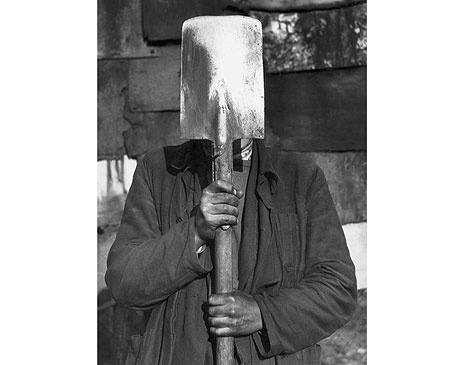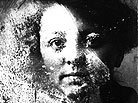Jerzy Lewczyński ‘Archeology of photography — works 1941-2005’
‘Jerzy Lewczyński. Archeology of photography’ The exhibition “Archeology of Photography — Works 1941—2005” was accompanied by the publication of an album, edited by Krzysztof...

“Archeology of Photography — Works from 1941-2005” is the first major monographic exhibition dedicated to Jerzy Lewczyński (born 1924), a member of ZPAF (Union of Polish Art Photographers) and an artist who has contributed greatly to post-war Polish photography.
The exhibition was organised with the co-operation of several institutions: The Museum of Art in Łódź (Krzysztof Jurecki), The National Museum in Wrocław (Adam Sobota), the BWA Contemporary Art Gallery in Katowice (Stanisław Ruksza), The Walery Rzewuski Museum of History of Photography in Kraków (Marek Janczyk), and The Arsenał City Gallery in Poznań (Elżbieta Łubowicz).
Jerzy Lewczyński's interest in photography started in the early 1940s. A decade later he became a fully fledged artist, and a member of the Gliwice branch of the Polish Photographic Association, alongside Tadeusz Maciejko, and subsequently of ZPAF, where he has become a member of the Artistic Council.
From 1957 to 1960 he belonged to an informal group, whose other members included Zdzisław Beksiński and Bronisław Schlabs, which was called “anti-photography”, the term coined by Alfred Ligocki after the title of their private exhibition in Gliwice in 1959. The group broke with the Socialist Realist formula and with the status quo in concepts of art photography.
Their images reveal that the authors were receptive to the new artistic experiments of the inter-war avant-garde period exemplified by Man Ray, surrealism, and abstract art, and by the “subjective photography” of Otto Steinert.
Lewczyński was also fascinated with the documental aspects of photography, and with the powerful existential elements and influences of Italian realist films. This is evident in, for example, Nieznany (Unknown) from 1959 and Ukrzyżowanie (Crucifixion) from 1956.
The late 1960s marked the beginning of his own individual style, abounding in references to amateur photography, childhood years, and interesting finds in the form of old negatives and prints. In the 1990s these all became part of his own theoretical concept which he called the “archeology of photography”. He stated, “When I use the term 'archeology of photography' I refer to the activities which are aimed at discovering, investigating and commenting on events, facts and situations that happened in the past, that is, in so called photographic past. Photography, providing the continuity of visual contact with the past, makes it possible to extend the influence of old, cultural and creative layers into the present.” Thus, his “archeology of photography” constitutes an open archive of human ideas.
The artist's later works reveal his ironic outlook on the reality of People's Republic of Poland, and more recently, on the media and the surrounding world. His artwork has influenced many Polish photographers, including Wojciech Prażmowski. Many of his concepts are ahead of similar world achievements, such as those of Christian Boltański.
Jerzy Lewczyński has also taken up art history and criticism, as well as the reconstruction of photographs. It is he who discovered Wilhelm von Blandowsky's photographs, and rescued works by a village photographer from around Zamość dating from the 1940s. He has now been providing the Silesian photographic community with creative inspiration for half a century. Jerzy Lewczyński's works are on display in the Museum of Art in Łódź, in the National Museum in Wrocław, the Walery Rzewuski Museum of History of Photography in Kraków, the Zamość Museum in Zamość, the Museum of Upper Silesia in Bytom, the Museum in Gliwice, the Centre Régional de la Photographie in Douchy les Mines, and in the Musée de l’Elisée in Lausanne.
The aim of this monographic exhibition was to define the place and significance of such unique artwork in the history of Polish, European and world photography. The Katowice exhibition has been the biggest presentation so far. It formed the fundamental part of the festival, “Month of Photography — Dedicated to Jerzy Lewczyński”, featuring exhibitions, meetings, academic sessions and film screenings in many galleries in Katowice: the BWA Contemporary Art Gallery, the Pusta Gallery, the ZPAF Gallery, the Fra Angelico Gallery of the Archdiocesan Museum, and the Almi Art Gallery.






